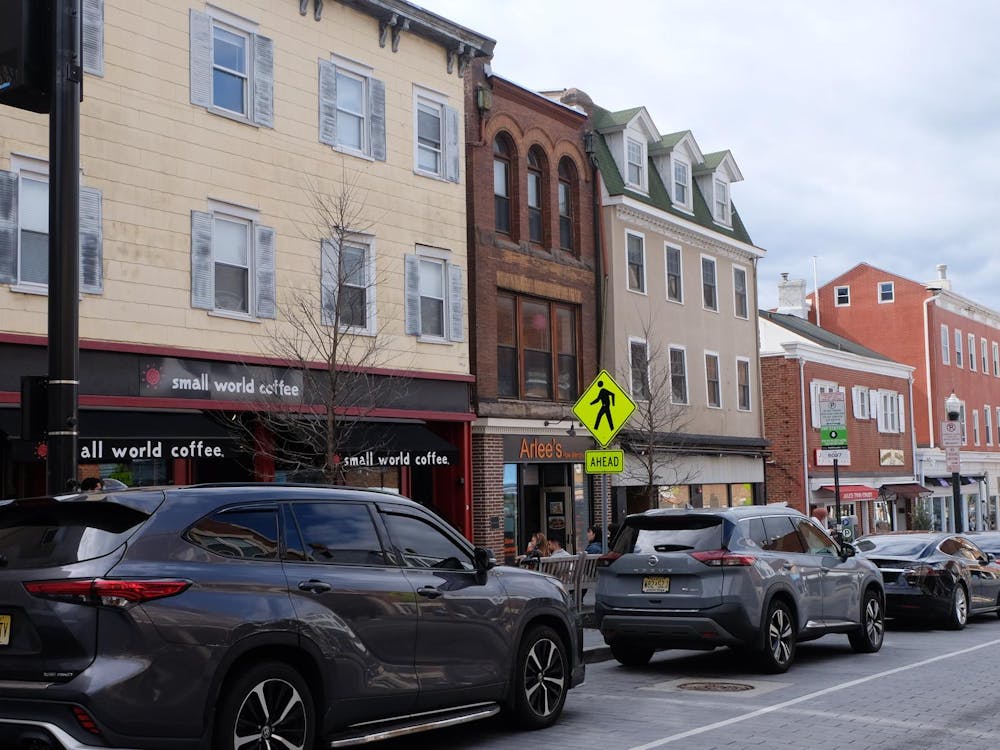For the first time, Princeton is offering a course in Vietnamese this semester in partnership with Brown University.
The course, taught in-person by a lecturer at Brown, is attended via Zoom by two Princeton students from a classroom in East Pyne Hall.
Despite the newness of the course, advocacy for its implementation has stretched back many years. Cam My Nguyen ’23, one of the students in the course, discussed her personal journey and push for the course in an email to The Daily Princetonian.
“When I entered Princeton, I realized that South East Asians are not only less represented within the college population, but also the realm of academia,” Nguyen wrote.
Nguyen said she spoke to her Director of Studies, Associate Dean of the College Rebekah Peeples, and Center for Language Study coordinator Vandana Bajaj about taking Vietnamese, but was “told it wasn’t an option.”
Several students reached out to the Princeton Center for Language Study (PCLS) in the past advocating for opportunities in Vietnamese studies. In May 2020, nine Princeton students received an email from PCLS following up on their request and promising to “initiate some conversations with our partners within the University” to establish a Vietnamese curriculum.
Student-generated momentum around Vietnamese finally paid off last summer when a program coordinator at the Princeton Center for Language Study (PCLS) made contact with the Center for Language Studies at Brown and expressed Princeton students’ interest in learning Viet, according to Peeples in an interview with the ‘Prince.’
“And it just so happened that Brown had established this course sequence in Vietnamese and was able to offer some of our students an opportunity to join that class virtually,” Peeples said.

Bajaj and PCLS Director James Rankin also acknowledged the crucial role student advocacy played in facilitating the partnership that allowed for the Vietnamese course in a statement to the ‘Prince.’ They explained how cross-institutional partnerships can make courses in less-commonly taught languages more accessible to students.
“Since less-commonly-taught languages are also those that have fewer trained teachers and very small class sizes, a strategy used by institutions across the country is to share course instruction, in real time through videoconferencing, with students at other schools,” the statement noted.
Despite the advantages of tele-collaborative learning, Nguyen wrote that occasional poor audio quality can make learning “difficult.”
“But the teacher has been very accommodating,” she said.

Brown’s visiting Vietnamese lecturer and professor of the course Trang Tran acknowledged the physical divide between students at Brown and Princeton as a result of the hybrid format.
“I want my students from Brown and Princeton to be able to interact with each other more, so I’ve been reaching out to people who have experience in hybrid teaching to help me,” she said in an interview conducted in Vietnamese.
In addition, she explained how she designed her curriculum to best accommodate the students in her class.
“I’m using a new, updated textbook this year because I think it’s better suited for the Brown and Princeton students in my Intermediate Vietnamese class who are all người Mỹ gốc Việt [Vietnamese heritage speakers].”
“My students want to learn about their roots, their culture, and they want to be able to talk to their family,” Tran explained. “So I don’t just want my class to be about the language.”
Instead, Tran envisioned a more comprehensive curriculum.
“Lớp của cô...có thể nói về văn hóa, về cách cư xử, cái suy nghĩ của người Việt Nam,” she said. “The class could discuss the culture and customs of Vietnamese people.”
Nguyen cited her background as a Vietnamese American as strong motivation to pursue the language.
“Both my parents were born in Vietnam, and I would love to connect more with my Vietnamese heritage … I feel like this is a great step!” Nguyen wrote.
The chance to reconnect her students to their heritage brings Tran great joy. “Cô rất là vui,” she said, describing her students’ decision to enroll in their native tongue as “rất là quan trọng và rất là có ý nghĩa [very important and meaningful].”
“They could have chosen to learn Spanish or Chinese or any other language, but they chose to learn Vietnamese,” she explained.
The future of Vietnamese at the University is yet to be determined. Departmental factors and level of student interest play an important role in deciding whether the Vietnamese sequence will continue into the Spring semester and whether it will expand past this academic year.
Currently, the course is housed under the Department of East Asian Studies (EAS), but department chair and professor Anna Shields explained that the possibility of offering Vietnamese studies in EAS “is not something that we have immediately on the agenda for the department.”
“Right now, our resources are very much dedicated to supporting our current languages, Chinese, Japanese, and Korean,” she said.
Shields noted logistical matters, such as translating credits from the Vietnamese course into the EAS certificate, that would “require a faculty discussion.”
“It’s very much a brand new venture, a work in progress, and we kind of want to see where it goes,” Shields said.
Peeples also emphasized Princeton students’ role in establishing a new language sequence, stating that “sustained student interest in the language sequence is also really critical.”
She notes how the progression of American Sign Language (ASL), from a stand-alone course to a credit bearing sequence, was the product of student advocacy.
“The commitment amongst students to that sequence was really demonstrated over time and through expanded offerings that eventually made it clear that there was enough student interest to actually hire a lecturer for the purpose of continuing that instruction in a way that aligned with the university’s language requirement.”
Enthusiastic about the Vietnamese course, Nguyen said she hoped it would become a language-bearing sequence one day.
“Being able to take a course in Vietnamese is very exciting for me because it gives me a sense of validation that the University believes this is a worthwhile opportunity, even if it is still disappointing that we have to take a course at Brown rather than have our own,” Nguyen reflected.
“I would like to continue studying Vietnamese,” she added, “and so I hope that I can fulfill my language requirement and continue further as well.”
Ngan Chiem is a junior in the Politics Department pursuing a Certificate in Creative Writing. In her free time, if she's not cooking Viet food, Ngan enjoys covering student activism on campus. She can be reached at nchiem@princeton.edu and on Instagram @nganstop.








